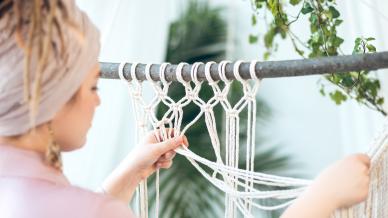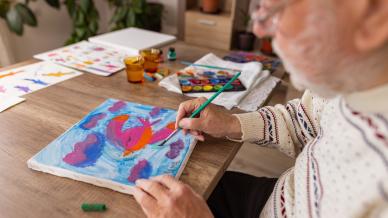When I was little I used to love making friendship bracelets using threads of colourful cotton to design cool patterns. I even jumped on the craze of scoubidous in the early 2000s. Little did I know, this was macramé.
What is macramé?
Macramé, a French word for knot, is known to be one of the oldest forms of textile art. It involves creating beautiful and functional designs through a series of knots in various patterns.
Each design is created by wrapping knots by hand. There’s no other equipment required!
Macramé is a popular trend in modern home decor and DIY projects. Artists and crafters are always finding new ways to bring it into the 21st century, from macramé wall hangings to macramé plant hangers.
The history of macramé
Dating back to the ancient Persians and Assyrians (2300 B.C) the word is believed to be derived from the Arabic word migramah which meant ‘fringe’ often used by artists as the decorative fringes found on shawls or veils.
Sailors soon picked up on making macramé knots and made items such as hammocks, belts, and hats from old ropes at sea. They traded or sold these items in Europe, making the craft popular over time. This soon became very popular during the Victorian era in the 18th and 19th centuries, especially among women. However, once the sewing machine became more popular after the Industrial Revolution between 1760 and 1840 the art of Macramé shortly declined.
Making its comeback during the 70’s hippie movement, artists at the time were known to create items such as vests, belts, wall hangings and furnishings. Macramé was everywhere until the 1980s. However, it’s safe to stay it’s making its comeback. With many discovering this art through social media platforms such as Instagram and Pinterest, macramé has made its mark on 21st-century fashion and home decor with big brands like H&M and Boohoo creating staple pieces inspired by this art form.
Click here to see some fashionable items currently in use.
What is macramé made of?
Choosing the right macramé cord is essential to creating step-by-step durable and aesthetic pieces. Here are 5 main types of cords you can choose from:
Cotton cord – The most versatile cord of them all. A soft, easy-to-work material available in a variety of colours. Perfect for beginners.
Hemp cord - Used mainly for jewellery, keyrings and small projects, hemp cord is strong, eco-friendly and biodegradable.
Jute cord – Used mainly for outdoor projects, jute is perfect if you’re looking for a natural, rustic look – perfect for rugs and doormats.
Polyester cord – Similar to cotton, polyester is also a durable cord, which is lightweight and can be used for many things.
Nylon cord – Known to be resilient and strong, nylon is perfect for withstanding tension and weight, making it ideal for creating sturdier macramé pieces such as plant holders and hammocks.
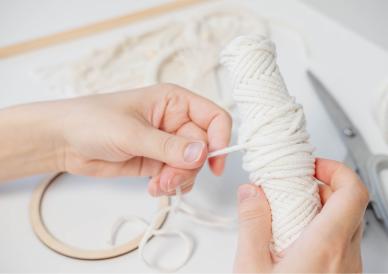
Types of knots
When it comes to macramé, it’s all about the knots. There are dozens to choose from. Simple knots and more elaborate knots like the double half hitch knot are the basic starting knots.
The two most common knots are half knots and square knots. These are the best to learn as a beginner before you move on to more complicated ones such as clover hitch and pipa knots.
You can learn more about the different types of knots by joining a WEA macramé course.
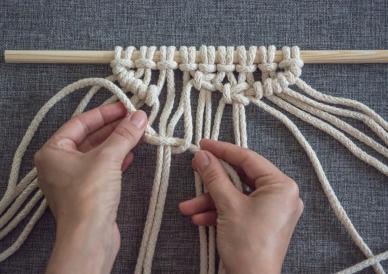
Inspiring images
Here are a few examples showcasing how macramé has evolved over time into stunning pieces such as earrings, bags, and pillowcases, all crafted from this simple art form.
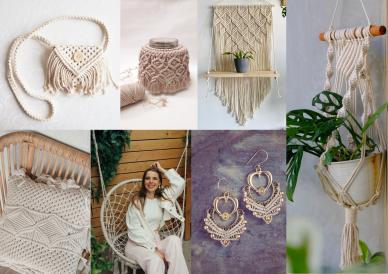
Feeling inspired? Explore which macramé courses we have running
